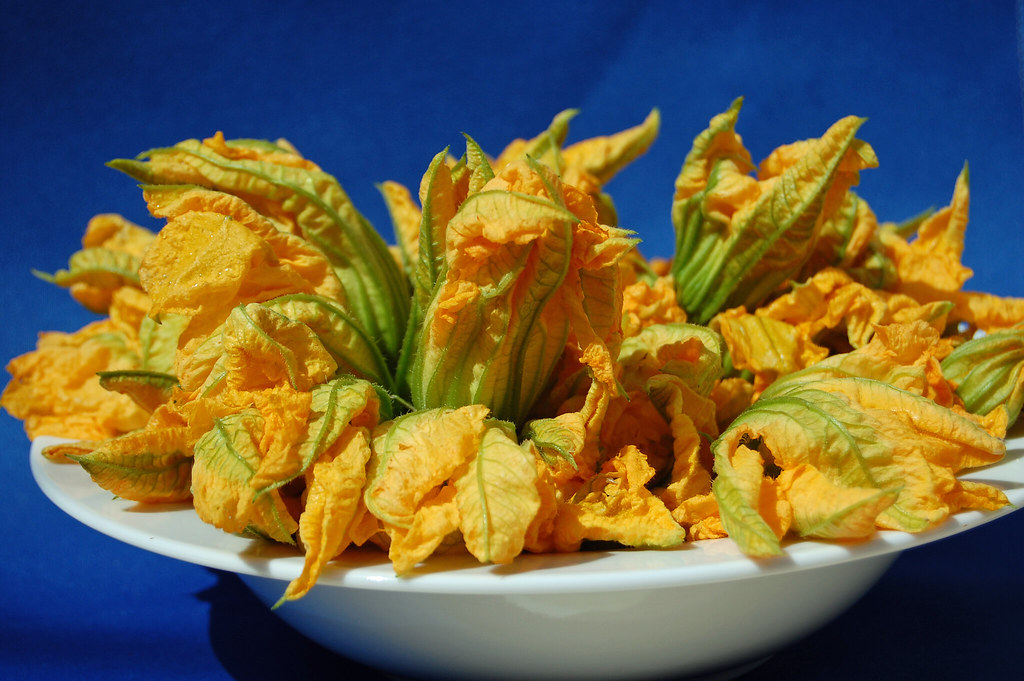This is a soup for gardeners, because you won't find squash blossoms (flores de calabaza) in your local gringo grocery store. Just wait until the flowers on your summer squash vines are in bloom or just opening, and snip them. I promise more will grow back and you'll still have more summer squash than you know what to do with.
Summer squash, by the way, is any squash that has a soft, edible skin. Zucchini is a summer squash, for example. Pumpkin and butternut are not.
INGREDIENTS:
- 20 squash blossoms with stems removed, divided
- 3 plum or roma tomatoes
- 3/4 small white onion, chopped and divided
- 1 chile (Your choice based on your heat preferences. I used a serrano and it was perfect for me.)
- 2 cloves garlic
- 2 cups cubed summer squash
- 6 tablespoons olive oil, divided
- salt to taste
- 6 cups water
- 2 teaspoons MSG
(optional)
- 1 sprig fresh epazote
or 1 teaspoon dried epazote
or 1 sprig fresh parsley
- 1/4 cup texturized vegetable protein
(TVP, optional)
PREPARATION:
- Quarter the tomatoes and put them in the blender. Add chile, the equivalent of 1/2 a small onion (leaving the other 1/4 aside for now), 10 squash blossoms, garlic, and blend until liquified. Add a small amount of water to facilitate blending, if necessary.
- Heat 3 tablespoons olive oil in a clay pot or large pot. Add the puree from the blender and simmer until the tomatoes are cooked (the puree will turn a darker red).
- While the tomato puree is cooking, heat the other 3 tablespoons olive oil in a cast iron pan. Add remaining onion and squash blossoms and all the cubed squash. Saute until squash is just cooked.
- Add the squash/onion/blossom saute to the pot with the tomato puree. Add water, epazote, and TVP and MSG, if using.
- Salt to taste and simmer ten minutes to let flavors blend.
Serve with crusty bread or warm corn tortillas. Serves 2-3.







